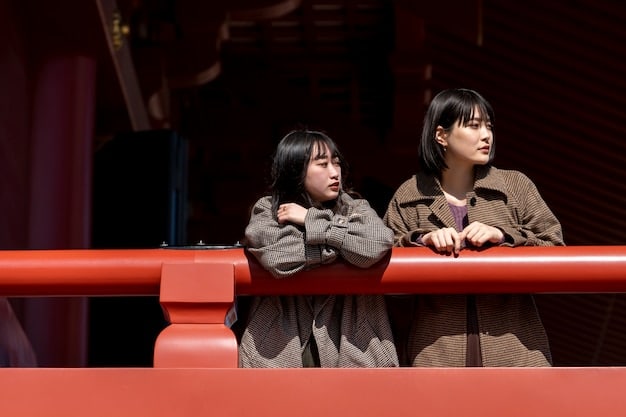Korean Drama Endings: Satisfying vs. Controversial Final Episodes

Advertisements
Korean drama endings often spark debate, with some series delivering satisfying conclusions that resonate with viewers, while others incite controversy due to plot twists or unresolved storylines, significantly impacting the overall perception and legacy of the drama.
The finale of a Korean drama, or K-drama, is arguably its most crucial part. It’s the culmination of hours spent invested in characters, storylines, and relationships. But what makes a satisfying ending versus a controversial one? This exploration of Korean drama endings will delve into the elements that make or break a series’ final episode, impacting its enduring appeal.
Anúncios
The Anatomy of a Satisfying K-Drama Ending
A satisfying K-drama ending is more than just a happy conclusion; it’s about providing closure, emotional resonance, and a sense of fulfillment for the viewer. These endings tie up loose ends, stay true to the established narrative, and leave a lasting positive impression.
Clear Resolutions and Character Arcs
One key element of a satisfying ending is the resolution of all major plotlines and character arcs. This means addressing the central conflict, resolving relationship issues, and showing character growth.
Anúncios
Staying True to the Narrative
An ending that feels inconsistent with the rest of the drama can be deeply disappointing. Satisfying endings respect the established tone, themes, and character development.

Here are some key aspects that contribute to a satisfying K-drama finale:
- Character Growth: Show how the characters have evolved throughout the series.
- Plot Resolution: All major storylines should be tied up neatly.
- Emotional Resonance: The ending should evoke a strong emotional response that feels earned.
- Consistency: It should feel like a natural extension of the storyline, not a forced or rushed conclusion.
Ultimately, a satisfying K-drama ending leaves viewers feeling content and fulfilled, with a sense of closure and a lasting positive impression of the series. It’s an ending that honors the journey the characters have taken and the investment the audience has made.
The Pitfalls of Controversial K-Drama Endings
Controversial K-drama endings, on the other hand, often frustrate viewers and can significantly diminish the overall enjoyment of a series. These endings may introduce unexpected plot twists, leave storylines unresolved, or betray established character development.
Unexpected Twists and Unresolved Storylines
One of the most common causes of controversial endings is the introduction of last-minute twists that feel unearned or illogical. Similarly, leaving major storylines unresolved can leave viewers feeling cheated and dissatisfied.
Character Betrayal and Inconsistency
When characters act in ways that are inconsistent with their established personalities, it can ruin the ending. Likewise, abandoning previously established character traits for the sake of a dramatic conclusion often leads to controversy.
Here are some contributing factors that often lead to a controversial K-drama finale:
- Sudden Character Changes: Characters acting out of character can alienate viewers.
- Forced Endings: Rushed or illogical plot resolutions often lead to frustration.
- Poorly Executed Twists: Twists that don’t make sense in the context of the story can be jarring.
- Unresolved Conflicts: Leaving major conflicts unresolved can disappoint viewers.
Essentially, controversial K-drama endings often stem from a failure to deliver on the promises made throughout the series. They can leave viewers feeling betrayed, confused, and ultimately disappointed with their investment in the story.
Analyzing Common Tropes in K-Drama Finales
K-drama finales often employ certain tropes, some of which are well-received while others can lead to controversy. Understanding these tropes can help viewers anticipate and appreciate (or critique) the ending of a series.
The “Happy Ever After” Trope
This trope involves a neatly wrapped-up conclusion where all the main characters achieve their goals, find love, and live happily ever after. While often satisfying, it can sometimes feel predictable or unrealistic.
The “Bittersweet Ending” Trope
This trope involves a conclusion where some characters achieve happiness, but others face loss or sacrifice. This can be emotionally resonant, but also divisive.

Exploring specific tropes and their impact:
- Reincarnation: A popular trope where characters are reborn, often with a chance at a happier life.
- Time Skip: Jumping ahead in time to show the characters’ future, often used to provide closure.
- Memory Loss: A controversial trope where a character loses their memory, often utilized for dramatic effect.
These finales often leave a lasting impression, sparking countless discussions and fan theories. Ultimately, the effectiveness of these tropes depends on their execution and how well they align with the rest of the drama.
Case Studies: Satisfying K-Drama Endings
Several K-dramas have been praised for their satisfying endings, providing closure for the characters and leaving a lasting positive impression on viewers. Examining these examples can highlight the elements that contribute to a well-received finale.
“Crash Landing on You”: A Perfect Blend of Romance and Resolution
“Crash Landing on You” is celebrated for its ending that balances romance, political intrigue, and character growth. The main characters find a way to be together despite seemingly insurmountable obstacles, and all major storylines are resolved in a satisfying manner.
“Reply 1988”: Nostalgia and Heartfelt Closure
“Reply 1988” is praised for its realistic portrayal of family relationships and the bittersweet nature of growing up. The ending provides closure for each character, leaving viewers with a sense of nostalgia and warmth.
Why these shows resonated with audiences:
- Strong Character Development: Viewers felt invested in the characters’ journeys and were happy to see them achieve their goals.
- Thoughtful Plot Resolution: The endings addressed all major storylines in a logical and satisfying way.
- Emotional Impact: The finales evoked strong emotions that felt earned and genuine.
These case studies demonstrate that satisfying K-drama endings are not just about happy outcomes but about delivering closure, emotional resonance, and a sense of fulfillment for the viewer.
Case Studies: Controversial K-Drama Endings
Conversely, some K-dramas have been criticized for their controversial endings, leaving viewers frustrated and disappointed. Analyzing these examples can illuminate the pitfalls to avoid when crafting a finale.
“Cheese in the Trap”: Unresolved Conflicts and Character Inconsistencies
“Cheese in the Trap” is often cited as an example of a controversial ending due to unresolved conflicts, character inconsistencies, and a general lack of closure. Many viewers felt that the finale betrayed the established narrative and left them feeling unsatisfied.
“Memories of the Alhambra”: Ambiguous Ending and Unanswered Questions
“Memories of the Alhambra” faced criticism for its ambiguous ending that left many questions unanswered. The lack of clarity and resolution frustrated viewers and diminished the overall impact of the series.
What went wrong in these scenarios:
- Lack of Closure: Major storylines were left unresolved, leaving viewers feeling cheated.
- Inconsistent Character Behavior: Characters acted in ways that contradicted their established personalities.
- Poor Pacing: The finales felt rushed and failed to provide a satisfying conclusion to the series.
These case studies highlight the importance of delivering on the promises made throughout the series and providing viewers with a sense of closure and resolution.
Crafting the Perfect K-Drama Finale: Lessons Learned
Ultimately, crafting a satisfying K-drama finale requires careful planning, attention to detail, and a deep understanding of audience expectations. By avoiding common pitfalls and embracing proven strategies, writers can create endings that resonate with viewers and enhance the overall impact of the series.
Prioritize Character Development and Plot Resolution
Ensure that all major character arcs are resolved in a satisfying manner and that all major storylines are tied up neatly.
Stay True to the Established Narrative
Avoid introducing unexpected twists or plot developments that feel inconsistent with the rest of the drama.
Key Takeaways:
- Understand your audience: Consider their expectations and desires when crafting the ending.
- Provide closure: Resolve all major storylines and character arcs.
- Stay true to your vision: Don’t compromise the integrity of the story for the sake of a happy ending.
By adhering to these principles, writers can craft K-drama finales that delight viewers and leave a lasting positive impression.
| Key Element | Brief Description |
|---|---|
| 😊 Satisfying Ending | Provides closure, resolves plots, and resonates emotionally with viewers. |
| 😠 Controversial Ending | Frustrates viewers with unresolved storylines or character inconsistencies. |
| 💔 Bittersweet Trope | Some characters succeed, others face loss, evoking mixed emotions. |
| 🤔 Ending Lessons | Crafting perfect finales requires keen planning and understanding audience expectations. |
Frequently Asked Questions About K-Drama Endings
▼
A satisfying K-drama ending typically provides closure for all major storylines, offers emotional resonance, and aligns with the series’ established themes and character development. It ideally leaves viewers feeling content.
▼
Controversial endings often stem from plot inconsistencies, unresolved conflicts, or character actions that deviate from their established personalities. Unexpected or illogical twists also contribute to negative reactions.
▼
Common tropes include the “happy ever after” scenario, bittersweet conclusions where some characters sacrifice for others, and devices like reincarnation or time skips to resolve storylines quickly.
▼
Creators should prioritize staying true to established narratives, ensuring all major conflicts are resolved, and being consistent with character behaviors. Understanding audience expectations is crucial for a satisfying conclusion.
▼
Character development is critical: Viewers must see growth and realistic evolution in main characters for the finale to resonate. When characters achieve goals after growth, endings feel much more fulfilling to viewers.
Conclusion
In conclusion, the end of a Korean drama can either make or break its overall impact. A satisfying conclusion typically wraps up all the storylines and offers closure. Understanding the elements that contribute to both satisfying and controversial K-drama endings can help viewers approach finales with informed expectations and appreciate the complexities of storytelling.





